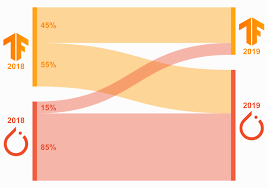
Comparing PyTorch and TensorFlow: A Deep Dive into Two Leading Deep Learning Frameworks
Exploring PyTorch and TensorFlow
PyTorch and TensorFlow are two of the most popular deep learning frameworks used by researchers and developers worldwide. Both frameworks offer powerful tools and libraries for building, training, and deploying neural networks, but they have some key differences that make them unique.
PyTorch
PyTorch is known for its dynamic computation graph feature, which allows for more flexibility and ease of use when building complex neural networks. It is widely used in research settings due to its simplicity and Pythonic syntax. PyTorch also provides excellent support for debugging and visualization, making it a favourite among researchers experimenting with new models.
TensorFlow
TensorFlow, on the other hand, is praised for its scalability and production readiness. It offers a static computation graph that allows for efficient distributed training across multiple GPUs and CPUs. TensorFlow’s high-level API, Keras, simplifies the process of building neural networks for beginners while providing advanced features for experienced users.
Key Differences
- PyTorch is more dynamic and flexible in nature, making it ideal for research and experimentation.
- TensorFlow is better suited for production-level deployment and scalability due to its static graph execution.
- PyTorch has a more Pythonic syntax that makes it easier to learn and use.
- TensorFlow’s Keras API provides a user-friendly interface for building neural networks quickly.
- Both frameworks have strong communities that contribute to their development and provide support to users.
Conclusion
In conclusion, both PyTorch and TensorFlow have their strengths and are valuable tools in the deep learning ecosystem. Researchers often prefer PyTorch for its flexibility and ease of use, while developers lean towards TensorFlow for its scalability and production capabilities. Whether you choose PyTorch or TensorFlow depends on your specific needs and goals in the field of deep learning.
Understanding PyTorch and TensorFlow: Key Differences, Beginner Recommendations, Project Selection, and Industry Use Cases
- What are PyTorch and TensorFlow?
- What are the key differences between PyTorch and TensorFlow?
- Which framework is better for beginners, PyTorch or TensorFlow?
- How can I choose between PyTorch and TensorFlow for my deep learning projects?
- What are some popular use cases for PyTorch and TensorFlow in the industry?
What are PyTorch and TensorFlow?
PyTorch and TensorFlow are two widely-used deep learning frameworks that provide tools and libraries for building, training, and deploying neural networks. PyTorch is known for its dynamic computation graph feature, offering flexibility and ease of use especially in research settings. On the other hand, TensorFlow is praised for its scalability and production readiness, with a static computation graph that enables efficient distributed training. Both frameworks have strong communities and cater to different needs within the deep learning ecosystem, making them essential tools for researchers and developers alike.
What are the key differences between PyTorch and TensorFlow?
One of the most frequently asked questions in the realm of deep learning is about the key differences between PyTorch and TensorFlow. PyTorch stands out for its dynamic computation graph feature, offering flexibility and ease in building complex neural networks, making it popular in research settings. On the other hand, TensorFlow is known for its scalability and production readiness, with a static computation graph that enables efficient distributed training across multiple GPUs and CPUs. While PyTorch’s Pythonic syntax and excellent support for debugging make it ideal for experimentation, TensorFlow’s high-level API, Keras, simplifies network building for beginners and provides advanced features for experienced users. Both frameworks have strong communities supporting their development, catering to diverse needs in the deep learning landscape.
Which framework is better for beginners, PyTorch or TensorFlow?
When it comes to choosing between PyTorch and TensorFlow for beginners, the decision often boils down to personal preference and learning style. PyTorch is favoured for its dynamic nature and Pythonic syntax, making it more approachable and easier to grasp for those new to deep learning. On the other hand, TensorFlow’s high-level API, Keras, provides a user-friendly interface that simplifies the process of building neural networks. Ultimately, both frameworks have their strengths and are suitable for beginners depending on individual preferences and goals in the field of deep learning. It’s recommended for beginners to explore both PyTorch and TensorFlow to determine which framework aligns best with their learning objectives and workflow preferences.
How can I choose between PyTorch and TensorFlow for my deep learning projects?
When faced with the decision of choosing between PyTorch and TensorFlow for deep learning projects, it is essential to consider your specific requirements and objectives. PyTorch is often favoured for its dynamic nature and ease of use, making it a popular choice among researchers and those focused on experimentation. On the other hand, TensorFlow is known for its scalability and production readiness, making it ideal for projects that require deployment at scale. Consider factors such as your familiarity with each framework, the complexity of your project, and whether you prioritise flexibility or efficiency in your development process. Ultimately, the choice between PyTorch and TensorFlow will depend on your individual preferences and the specific needs of your deep learning project.
What are some popular use cases for PyTorch and TensorFlow in the industry?
PyTorch and TensorFlow are widely used in various industries for their robust capabilities in deep learning and machine learning applications. In the healthcare sector, both frameworks are employed to develop predictive models for disease diagnosis and personalised treatment plans. In finance, they are used for algorithmic trading, fraud detection, and risk management. The automotive industry leverages PyTorch and TensorFlow for advancements in autonomous driving systems and driver assistance technologies. Additionally, these frameworks play a crucial role in natural language processing tasks such as language translation, sentiment analysis, and chatbots. Tech giants like Google, Facebook, and Amazon also rely on PyTorch and TensorFlow to enhance their search engines, recommendation systems, and AI-powered services.
